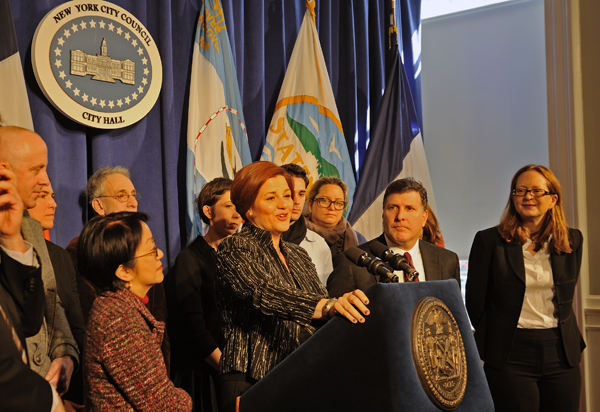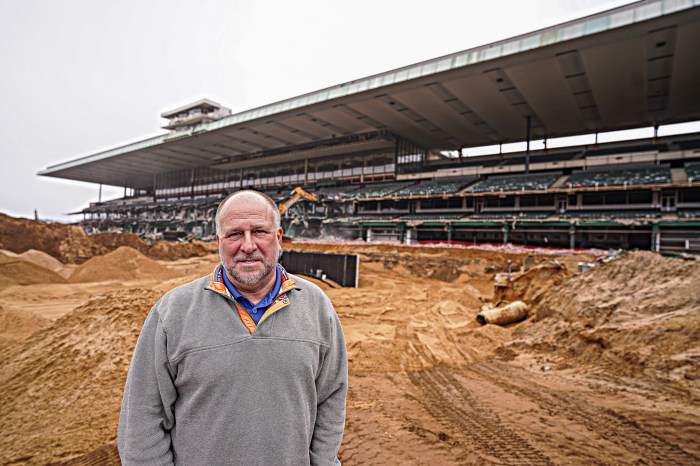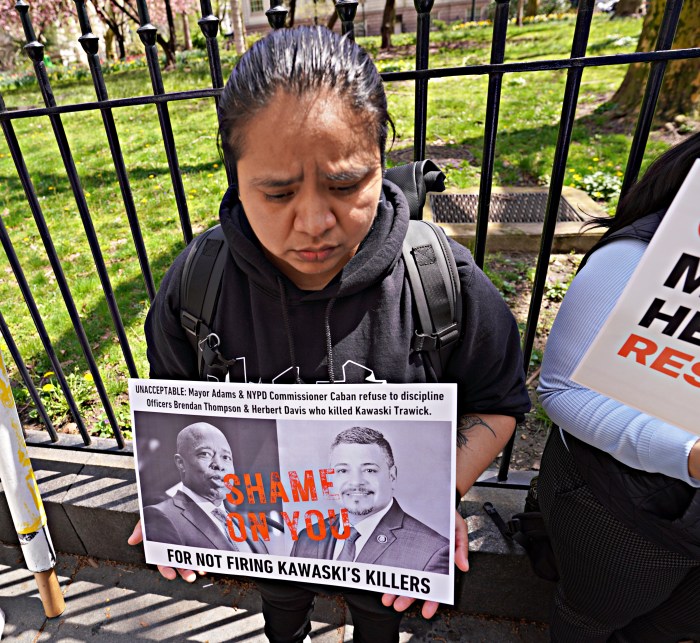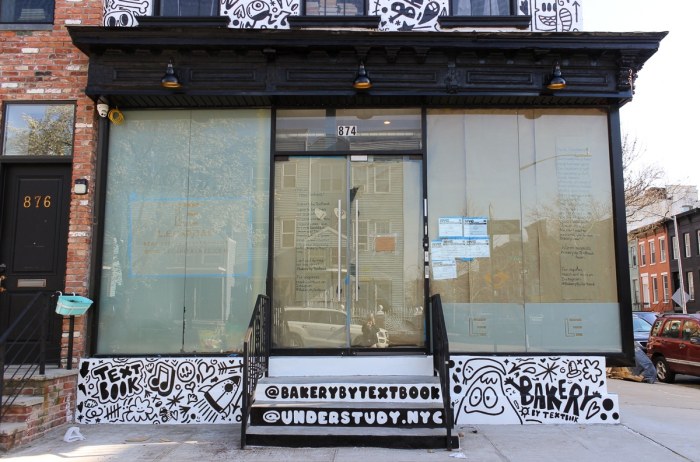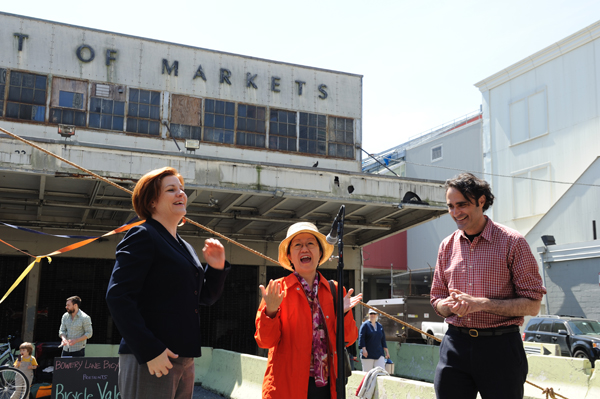
By Terese Loeb Kreuzer with Josh Rogers |
[Updated with correction and new information March 28, 2013]
“We are crying with joy,” said Sal Himani when he heard that City Council had struck a deal with The Howard Hughes Corporation, landlord of the South Street Seaport’s Pier 17, to extend leases through Sept. 9, 2013.
Himani’s family has owned restaurants on Pier 17 for almost two decades and was among the tenants that had previously been served with an April 30 vacate notice so that Howard Hughes could begin tearing down the existing mall on Pier 17, preparatory to constructing a new, glass-enclosed structure.
Tenants had been pleading for months for an extension that would allow them to operate through the busy summer season and attempt to recoup losses sustained from Superstorm Sandy.
On March 20, the City Council approved the Hughes Corporation’s ULURP (Uniform Land Use Review Procedure) application for the redevelopment of Pier 17. However, the $200 million construction plan was approved with a few modifications — the lease extension among them.
A letter of agreement dated March 19, 2013 from Christopher Curry, senior executive vice president of Howard Hughes, to City Councilmember Margaret Chin, in whose district the Seaport lies, spelled out the terms to which Howard Hughes agreed.
Among other things, Curry said that existing tenants on Pier 17 could apply for space in the new mall. However, to be considered he said, they would have to be “in good standing” and must not have threatened litigation or have entered into litigation with the Hughes subsidiary, South Street Seaport Limited Partnership, the legal entity that holds the Seaport lease.
The Himani family had wanted to reapply for Pier 17 space, but when Sal Himami heard that a legal suit against Howard Hughes and its subsidiary would preclude that, his joy over the City Council settlement with the Hughes firm turned to dismay.
In January, the Himanis sued Howard Hughes over a lease they hold in the Pier 17 Link building for a restaurant called Seaport Café. That lease was not due to expire until 2017. Other Pier 17 tenants have also sued because they have long-term leases that Hughes is abrogating. In the Seaport Fulton Street corridor, Bridgewater’s and The Gap have sued Howard Hughes over lease cancellations and failure to remediate storm damage in a timely fashion so that the businesses could reopen.
To obtain City Council approval for its Pier 17 ULURP, Howard Hughes made a few other concessions in addition to lease extensions having to do with rooftop acoustics, maritime uses of the pier and public access.
In exchange, Howard Hughes not only received approval to reconstruct the mall and the Link building on Pier 17 but also received the zoning change that it had requested, affecting the East River waterfront from Maiden Lane to the Brooklyn Bridge.
The change allows Hughes to bring larger retailers, such as department stores, to the new Pier 17, but it also means that there are much tighter height restrictions on the New Market Building, which is just outside the Seaport’s historic district.
The firm’s predecessor, General Growth Properties, had proposed a 500-foot condo-hotel years ago, but the new floor-to-area ratio on residential buildings has been reduced from 10 to 3.4. Kelly Magee, Chin’s spokesperson, estimated that if Hughes ended up trying to develop the site with a hotel or apartment, the new limit would be about 6 to 10 stories, which would be subject to a new ULURP.
Chin and City Council Speaker Christine Quinn did not mention the zoning limit at a March 20 press conference announcing the deal, helping to fuel opponents’ concerns that zoning changes nevertheless could allow the Dallas-based developer to construct smaller hotels, apartment buildings and retail establishments on the waterfront, subject to another ULURP application.
“Not very much was given by Howard Hughes [in the final deal],” said Robert LaValva, founder of the New Amsterdam Market, which has been operating seasonally on South Street between Beekman St. and Peck Slip since 2007. “They made some minor concessions that really, in the scale of things, shouldn’t be considered concessions at all.”
Quinn and Chin called the press conference March 20, not only to announce the Pier 17 agreement but also some changes in the Seaport that will affect the New Amsterdam Market directly.
“We’ve reached an agreement for two new, year-round, seven-day-a-week food markets located in the South Street Seaport area of Manhattan — one of the nation’s oldest neighborhoods and a place where the food trade helped build New York City into a thriving port town,” Quinn said.
She said that food markets in other cities such as Seattle, Philadelphia and San Francisco had created jobs and attracted tourists in addition to serving local residents.
“Now New York City will no longer be one of the only major cities in the country without a destination market,” Quinn continued. “Instead, we will soon be home to tens of thousands of square feet of indoor space specifically for local, regionally sourced food — a fast-growing and very important sector in New York City and something that’s helping us diversify our economy.”
The addition of food markets was praised by some in Lower Manhattan, including the Downtown Alliance and Catherine McVay Hughes, chairperson of Community Board 1.
One of the two new markets announced by Quinn and Chin is slated to open by Oct. 1, 2014 in space currently leased by Howard Hughes. It might be in the Link building and will sell local and regionally sourced food.
The other market will occupy no less than 10,000 square feet in the Tin Building, which dates from 1907 and is in the South Street Seaport historic district. It, too, would sell local and regional food.
Both markets might be controlled by The Howard Hughes Corporation.
On Dec. 12, 2011, Howard Hughes signed a non-binding Letter of Intent with the New York City Economic Development Corporation in which E.D.C. gave Howard Hughes an option for “mixed use” development in the Tin Building, the New Market Building, certain portions of the street under the F.D.R. Drive and the Schermerhorn apartments. These are in the early 19th-century buildings on Schermerhorn Row, where the South Street Seaport Museum is now located.
Howard Hughes has until June 30, 2013 to exercise this option. So far, the firm has been vague about its plans. Curry has repeatedly stated that Howard Hughes has no master plan for the Seaport.
Quinn said “we haven’t decided yet” who the food operator will be at the Tin Building. She said she would encourage the New Amsterdam Market to bid to be the operator.
“There will be a process by which the operator of the building will be decided,” Quinn said. “It may be the Howard Hughes Corporation with public input. It may be the E.D.C. with public input. It depends on whether or not Howard Hughes exercises its option or they don’t and then it goes to E.D.C.”
By choice, LaValva was not present at the press conference. Neither were any of the members of the Save Our Seaport Coalition, a group of organizations and individuals that has been working to preserve the historic nature of the South Street Seaport in the face of what appear to be Howard Hughes plans for high-rise development.
“We did not want to be seen anywhere near it,” the coalition’s David Sheldon said of the press conference.
The Save Our Seaport Coalition has been circulating a petition in support of its viewpoint. As of March 25, it had almost 5,000 signatures.
“What we’ve been asking for in our petition is still perfectly valid,” said Sheldon, the group’s spokesperson. “These issues have not been addressed by what happened at City Council on Thursday.”
He said the coalition wants the Seaport Historic District to be extended to the north side of Pier 17 and to the New Market Building. It also wants to support the South Street Seaport Museum, whose waterfront space and access to Pier 16, over which it has control, have been threatened by Howard Hughes’ plans for Pier 17.
As for the proposed market in the Tin Building, Sheldon said that, “The 10,000 square feet of space that [City Council] is talking about is less space than the New Amsterdam Market takes now. And not only would Howard Hughes get to pick the tenant of the Tin Building, should they exercise an option on it, but they would get to charge the rent.”
LaValva has said that the market space proposed for part of the Tin Building, even combined with additional space for a market elsewhere in the Seaport would not be sufficient to create the destination market that Speaker Quinn envisions. He said it would be an amenity for local residents but would not create the exciting sense of place that would attract tourists to visit.
Moreover, he has said repeatedly that his vision for the Seaport was not simply to have a food market but to preserve the area as a historic district, reflecting the fact that this was the port where New York City commerce got its start and where there has been a market of one kind or another for centuries.
“It’s disappointing to see that a historic public resource such as the Fulton Fish Market is, without any questioning, on its way to being torn down and made into a real estate development by a suburban, master plan community developer,” he said. “There was no public planning process that led to this decision regarding public property.”
He noted that in 2006, there was a public planning charrette called “Seaport Speaks.” Its recommendations for preserving the historic Seaport are online at seaportspeaks.org/.
General Growth, the previous Seaport leaseholder, was part of that initiative as was E.D.C.
“Anyone who needed to be there was there,” LaValva said. “Everything described in that document was ignored.”
Between 2006 when that charrette took place and now, LaValva observed that there had been several significant changes at the Seaport.
“We established the New Amsterdam Market and it grew, and it proved that it was a stakeholder in the neighborhood,” he said. He also noted that the South Street Seaport Museum, which had gone through very hard times, “was finally put into the extraordinarily capable hands of a woman who everybody admires and thinks is topnotch — Susan Henshaw Jones.”
He said that neither he nor Jones had been invited by the E.D.C. to be part of the planning process, along with Howard Hughes.
“When you have a lease, there’s not just a tenant there — there’s a landlord there — and the landlord is the city,” LaValva remarked. “Since when is the tenant given the only right to decide what to do with public property?”
LaValva said that in light of these developments, he has not yet decided whether he will reopen the New Amsterdam Market this year.
CORRECTION: The original version of this article (posted March 25, 2013) incorrectly stated that the change in zoning could allow “high-rise apartments” at the Seaport. In fact the zoning change reduces the size limit on residential buildings.
